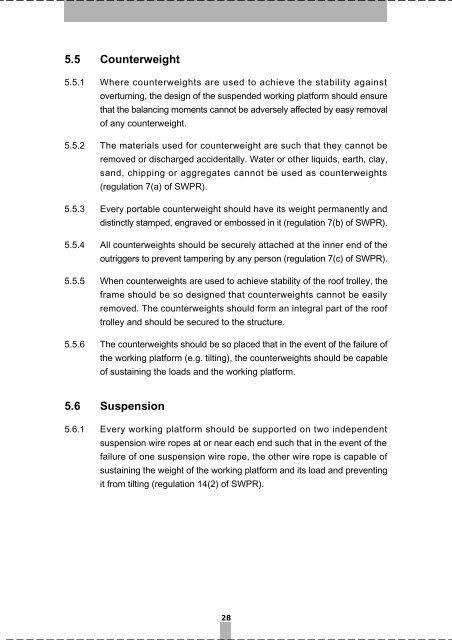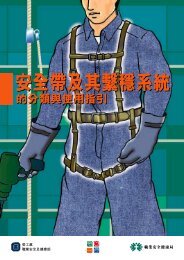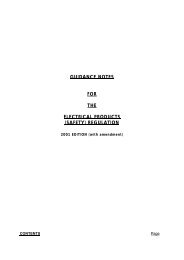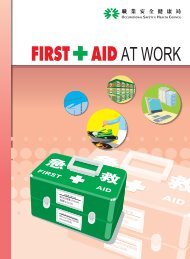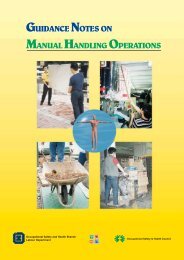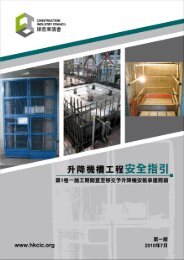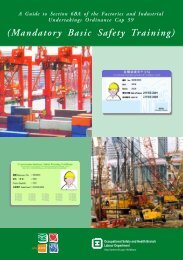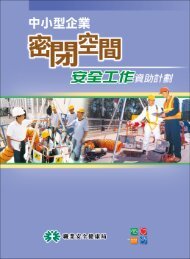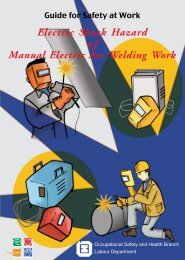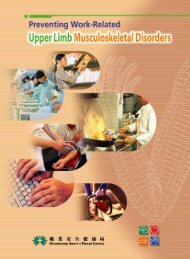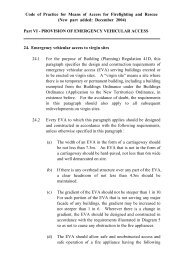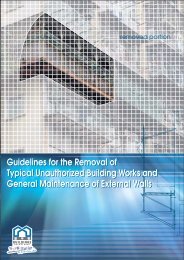Code of Practice for Safe Use and Operation of Suspended Working ...
Code of Practice for Safe Use and Operation of Suspended Working ...
Code of Practice for Safe Use and Operation of Suspended Working ...
- No tags were found...
Create successful ePaper yourself
Turn your PDF publications into a flip-book with our unique Google optimized e-Paper software.
5.5 Counterweight5.5.1 Where counterweights are used to achieve the stability againstoverturning, the design <strong>of</strong> the suspended working plat<strong>for</strong>m should ensurethat the balancing moments cannot be adversely affected by easy removal<strong>of</strong> any counterweight.5.5.2 The materials used <strong>for</strong> counterweight are such that they cannot beremoved or discharged accidentally. Water or other liquids, earth, clay,s<strong>and</strong>, chipping or aggregates cannot be used as counterweights(regulation 7(a) <strong>of</strong> SWPR).5.5.3 Every portable counterweight should have its weight permanently <strong>and</strong>distinctly stamped, engraved or embossed in it (regulation 7(b) <strong>of</strong> SWPR).5.5.4 All counterweights should be securely attached at the inner end <strong>of</strong> theoutriggers to prevent tampering by any person (regulation 7(c) <strong>of</strong> SWPR).5.5.5 When counterweights are used to achieve stability <strong>of</strong> the ro<strong>of</strong> trolley, theframe should be so designed that counterweights cannot be easilyremoved. The counterweights should <strong>for</strong>m an integral part <strong>of</strong> the ro<strong>of</strong>trolley <strong>and</strong> should be secured to the structure.5.5.6 The counterweights should be so placed that in the event <strong>of</strong> the failure <strong>of</strong>the working plat<strong>for</strong>m (e.g. tilting), the counterweights should be capable<strong>of</strong> sustaining the loads <strong>and</strong> the working plat<strong>for</strong>m.5.6 Suspension5.6.1 Every working plat<strong>for</strong>m should be supported on two independentsuspension wire ropes at or near each end such that in the event <strong>of</strong> thefailure <strong>of</strong> one suspension wire rope, the other wire rope is capable <strong>of</strong>sustaining the weight <strong>of</strong> the working plat<strong>for</strong>m <strong>and</strong> its load <strong>and</strong> preventingit from tilting (regulation 14(2) <strong>of</strong> SWPR).28


